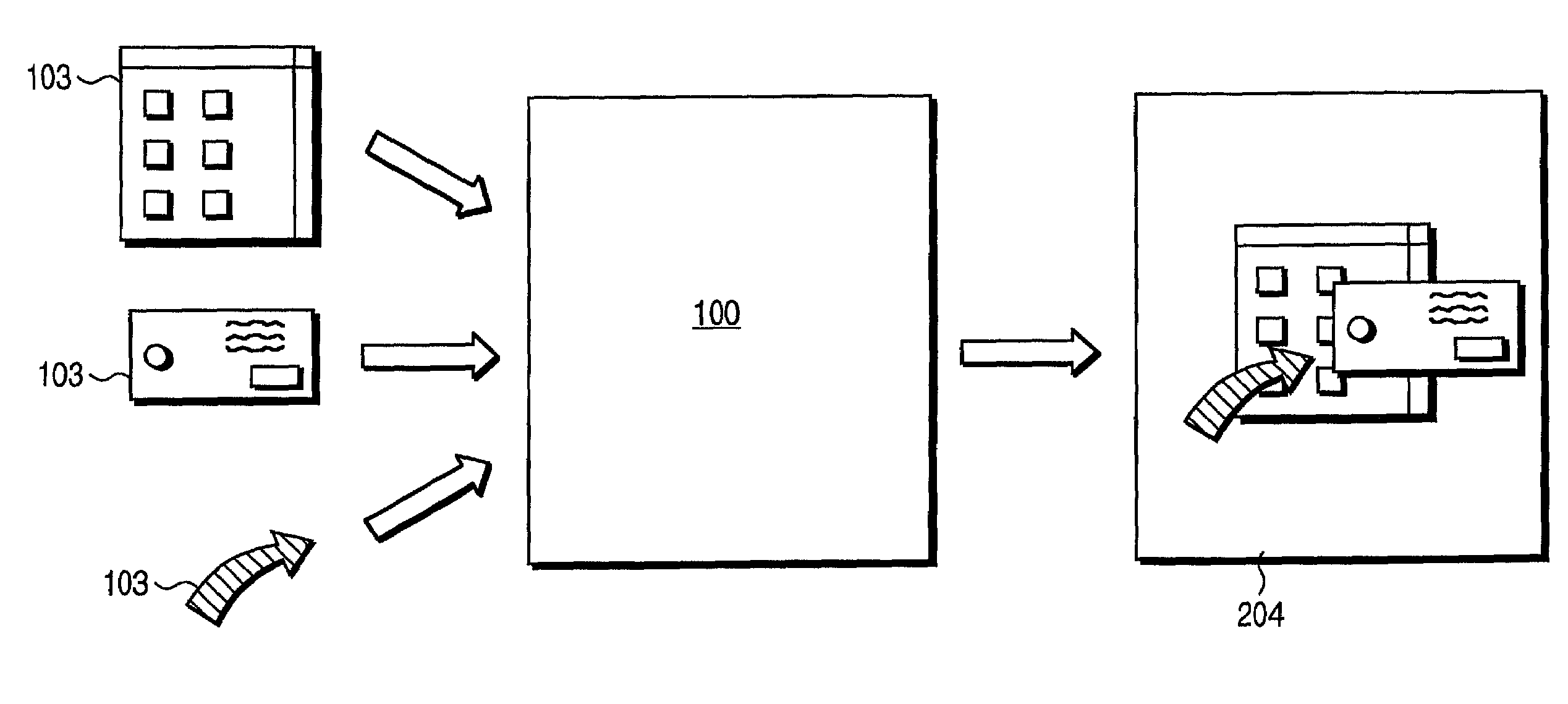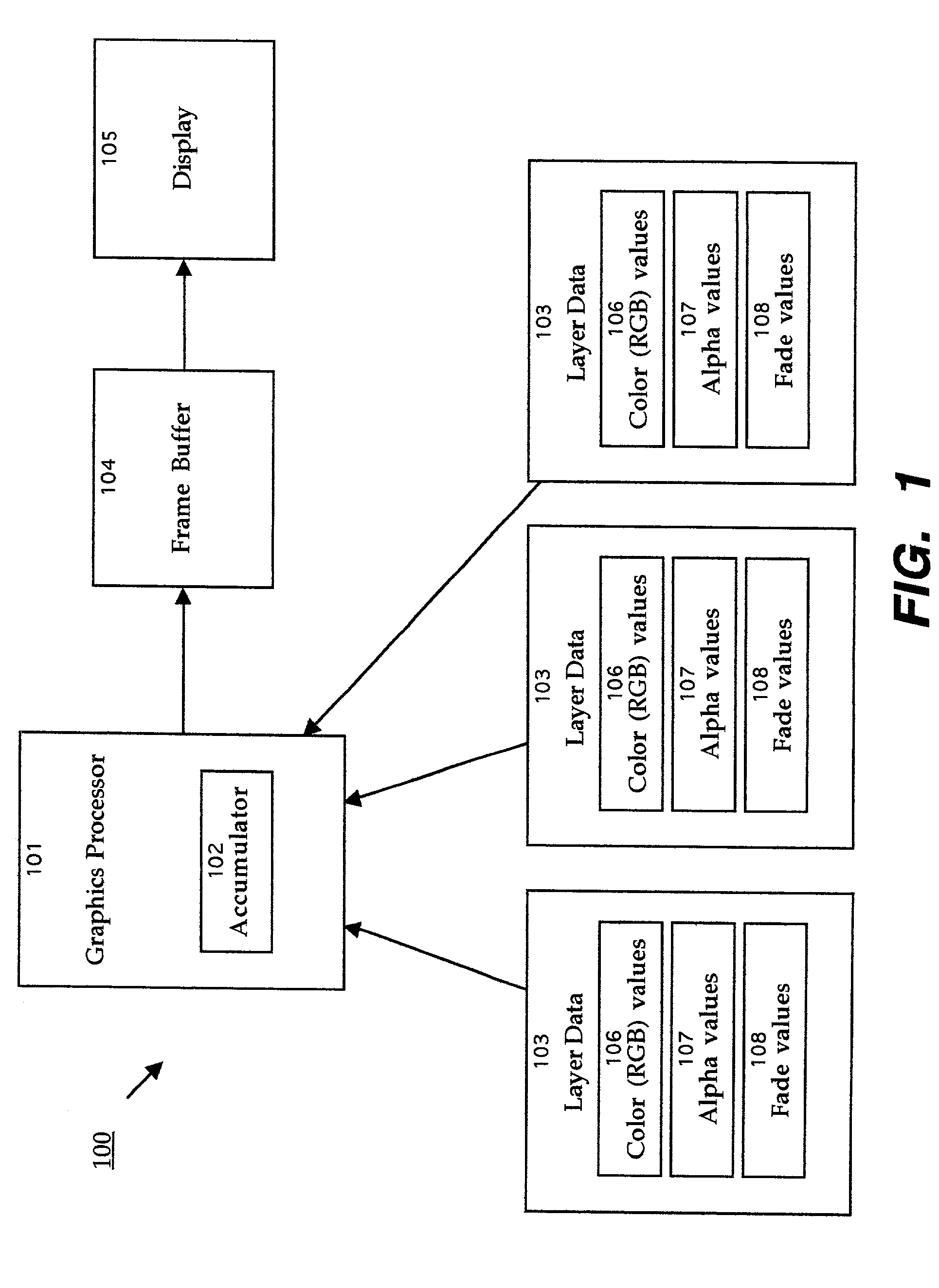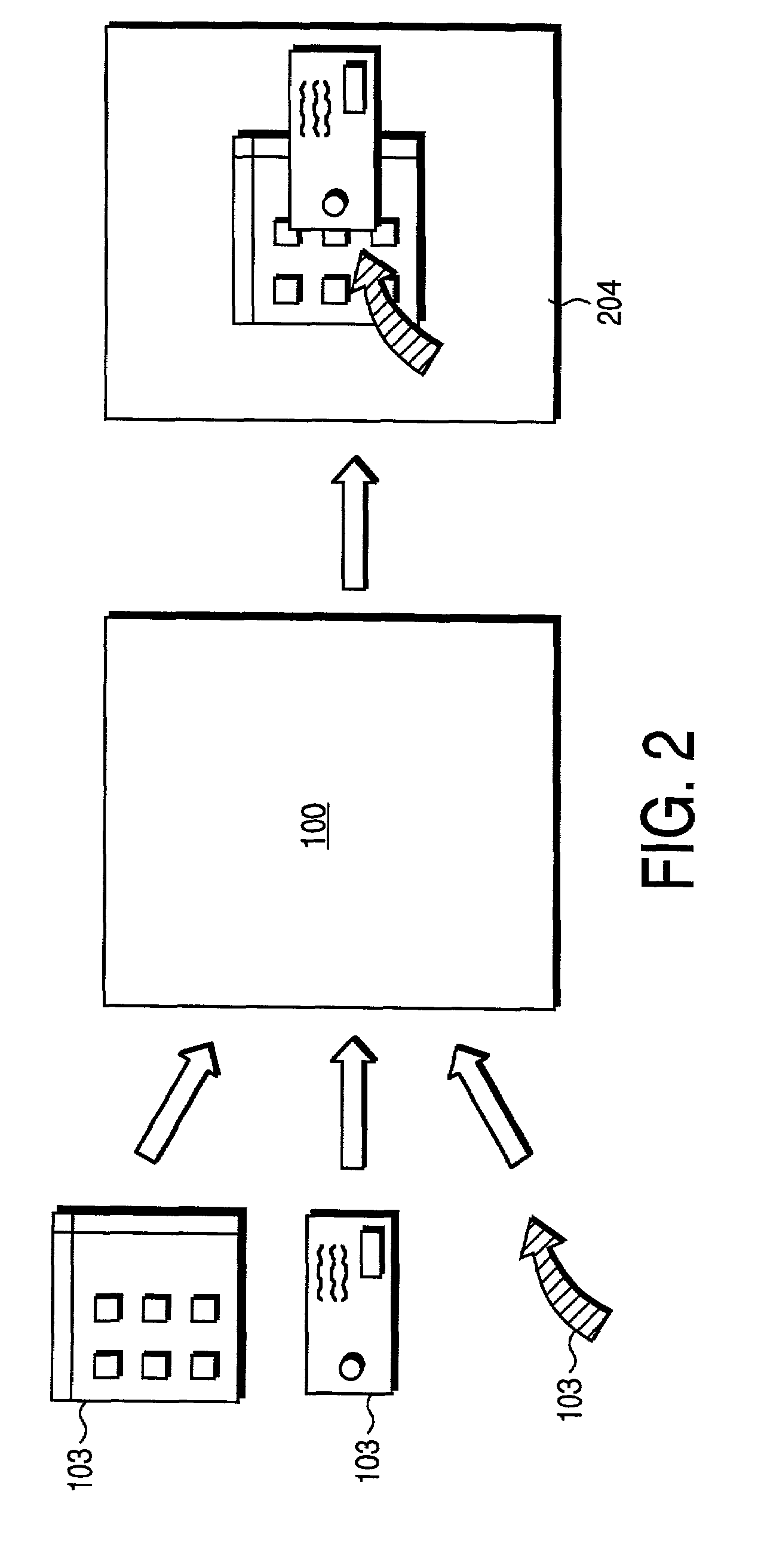Rendering translucent layers in a display system
a display system and translucent technology, applied in the field of computer-implemented display systems, can solve the problems of poor performance, more complex processing, and slow writing date to frame buffers, so as to improve graphics system performance, avoid unnecessary write operations, and reduce flickering effects
- Summary
- Abstract
- Description
- Claims
- Application Information
AI Technical Summary
Benefits of technology
Problems solved by technology
Method used
Image
Examples
Embodiment Construction
[0028]Referring now to FIG. 1, there is shown a block diagram of the overall architecture of one embodiment of the present invention. In this embodiment, system 100 is implemented on a conventional personal computer having a central processing unit and / or graphics processor 101 and a display 105 such as a cathode ray tube (CRT) or liquid crystal display (LCD) device. The steps of the present invention may be stored as software in an operating system or application software for execution by processor 101 in the computer, as is known in the art. For example, system 100 may be implemented on a Macintosh® computer, from Apple Corporation, running the MacOS operating system, and the software may form part of a Window Server module within the operating system.
[0029]Layer data 103 represent source images to be composited for display on display 105. For example, layer 103 may include bitmap representations of windows, graphical user interface (GUI) elements, photographs, drawings, animation...
PUM
 Login to View More
Login to View More Abstract
Description
Claims
Application Information
 Login to View More
Login to View More - R&D
- Intellectual Property
- Life Sciences
- Materials
- Tech Scout
- Unparalleled Data Quality
- Higher Quality Content
- 60% Fewer Hallucinations
Browse by: Latest US Patents, China's latest patents, Technical Efficacy Thesaurus, Application Domain, Technology Topic, Popular Technical Reports.
© 2025 PatSnap. All rights reserved.Legal|Privacy policy|Modern Slavery Act Transparency Statement|Sitemap|About US| Contact US: help@patsnap.com



